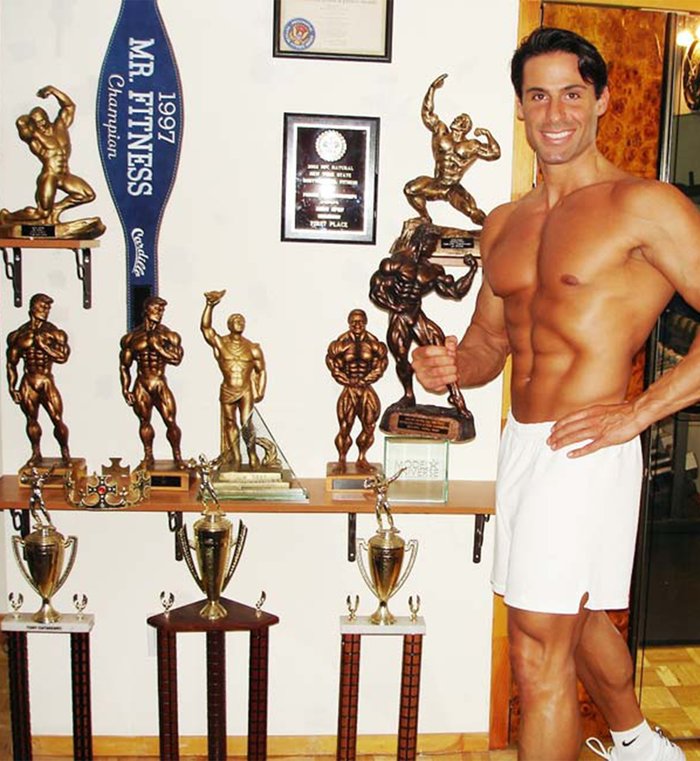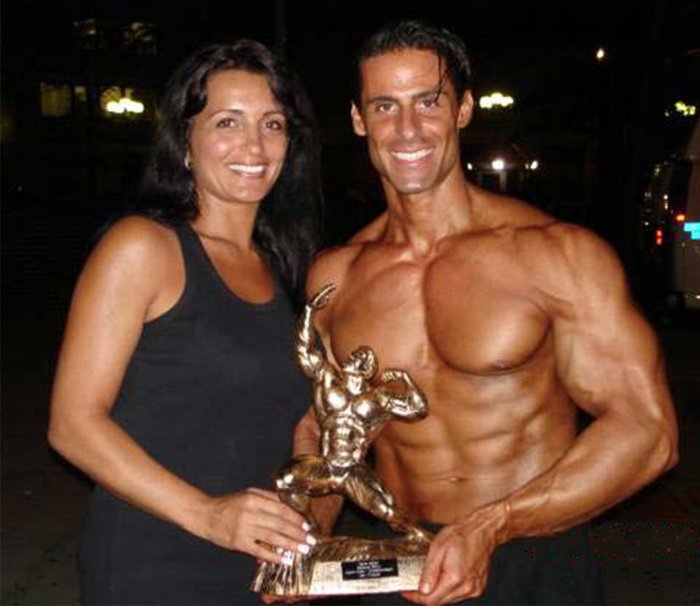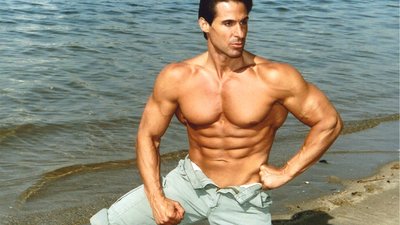Faster than a speeding bullet. More powerful than a locomotive. Able to leap tall buildings in a single bound. Okay, maybe Anthony Catanzaro couldn't perform all those wondrous feats of strength, but he had still become known as the "Superman of Fitness." And just like the real Superman, he's met his kryptonite, and it's giving him one hell of a battle.
In 2013, when Catanzaro was at the relatively young age of 43, he was diagnosed with Parkinson's disease, the same debilitating illness that struck movie star Michael J. Fox, boxer Muhammad Ali, and countless others. Typically, Parkinson's affects the elderly. When it affects people Catanzaro's or Fox's age, the results can be particularly devastating.
After gracing the covers of bodybuilding magazines just a few short years ago, Catanzaro now has trouble completing simple, everyday tasks like showering, shaving, and dressing. He also has difficulty typing, so his wife, Tina, answers my email questions as we work on this article. When Catanzaro and I speak on the phone, though, his voice and purpose are strong.
When Catanzaro and I first began talking, he was adamant that he could not only cure himself, but he could do it without drugs. According to medical science, however, Parkinson's disease has no known cure. Most patients take a variety of medications to help manage the symptoms. Which makes Catanzaro's approach to the disease surprising, contrarian—and bold.
"I believe that continuing my training and nutrition regimens is the best ways to combat Parkinson's," he says. "But I also think you need to combine these tangible things with something intangible: how you view your life." In other words, your mindset.
Becoming Superman
Catanzaro was drawn to fitness and super-human achievements at an early age.
"When I was 15, I watched a lot of WWF. I was inspired by Hulk Hogan, Randy 'Macho Man' Savage, and movie stars like Arnold and Stallone." These men became his heroes not only because of their physiques, but because of their stop-at-nothing attitudes. "I felt like I had something inside pushing me to excel that must have been pushing them too."
Catanzaro began weight training at home in his early teens. By the time he reached 18, he had already begun modeling eveningwear and jewelry. He became a fitness model in his early 20s. That in turn inspired him to pursue fitness competitions. He entered the WNBF Mr. Fitness International in 1996, placing third among nearly 30 competitors.

"It was a great start, but I wasn't satisfied with the result," he says. One year later, he won the same event, and switched from fitness to natural bodybuilding.
In 1998, Catanzaro entered his first bodybuilding contest, the NPC Natural Bodybuilding Championships. He won that event, too, and went on to either win or place second in every natural bodybuilding show he entered from then on over the next decade-plus.
Encountering Kryptonite
By January 2013, Catanzaro started to notice something was wrong with his body—very wrong. "I got cramps in my left foot every time I began to walk. My whole body started feeling stiff, and I began to feel a slowness on my left side. I knew something was wrong with my body, but I began wondering if something was wrong with my brain."
Thus began a long campaign to get a proper medical diagnosis. Catanzaro went to doctor after doctor and neurologist after neurologist, but they all ascribed his symptoms to overworking or just normal aging. But he knew the doctors were missing something. After all, he says, he'd felt like a veritable Superman most of his adult life. Now he was feeling very mortal.
Eventually, Catanzaro went to see a movement-disorder specialist at the hospital of Columbia University in Manhattan. After the specialist examined him, she called in another doctor, who did his own examination. The two left to confer, then came back 10 minutes later with a diagnosis: "You have Parkinson's."
On the train back home with Tina, Catanzaro didn't say a word. All he could do was hang his head in despair. "I started to panic," he recalls. "Honestly, all I could do was cry."
That sense of doom was lifted a day later when his primary-care physician told him the diagnosis was wrong. But the continued decline in his health eventually revealed the truth.
Soon, Catanzaro was having trouble with smaller movements: buttoning his shirt, holding a razor, using a fork. What confused him was that even though his body seemed to be falling apart, he was still able to continue his workout regimen, including squatting a very challenging 300 pounds.
So he decided to seek yet another opinion, this time from a Parkinson's specialist. But this physician, along with the three movement-disorder specialists who followed, were certain: Catanzaro had Parkinson's disease.

What is Parkinson's Disease?
The National Parkinson's Foundation describes the disease in its name as "a neurodegenerative brain disorder that progresses slowly in most people." Damage to or death of neurons, the nerve cells in the brain, starts off a chain of events that culminates in Parkinson's disease. Neurons produce an important brain chemical, dopamine. When dopamine levels fall, abnormal nerve-firing patterns emerge that cause the impaired movement typical among people with Parkinson's.
Symptoms may come on slowly or rapidly, and can vary from person to person. The impaired movements may include tremors, rigidity and/or awkward movements, and problems with balance and walking. It may seem odd, or some form of denial, for Catanzaro to have sought so many second opinions, until you understand that Parkinson's disease is extremely hard to diagnose. This is especially true with a young patient like Catanzaro. After all, Parkinson's is caused by the absence of dopamine rather than the presence of something, such as a virus, that can be detected.
To date, specialists don't know what causes the nerve death that leads to the drop in dopamine levels. It doesn't appear to be directly inherited, but it may well have a genetic component, since it's often found in family clusters. There is no evidence to date of a single "Parkinson's gene." But there is evidence that it may be caused by genetic mutation.
Living With Parkinson's
Today, Catanzaro continues to follow his "mind-over-matter" approach to the disease. "I believe we build our bodies with our minds, not just with dumbbells and barbells."
He's still able to perform all the weight-training exercises he could in his prime, continues to train with weights four days a week, and experiments to find the right mix of macronutrients. Overall, his diet is relatively balanced among protein (a little over 100 grams per day), carbohydrates (150 grams a day), and fat (75 grams a day). In total, he consumes about 2,000 calories a day, relying mostly on natural foods, which he believes are crucial in his fight against the disease.
According to The Michael J. Fox Foundation for Parkinson's Research, "No singular diet can treat Parkinson's disease or its symptoms." They go on to say, however, that "a healthy and balanced diet can improve general well-being."[1]
The Battle Ahead
In every Superman movie, the Man of Steel must deal with the kryptonite that invariably gets thrown into his path. That's Catanzaro's mission now, too. "When I first started working out, I wanted to create a smaller version of Arnold, and I believe I succeeded. Now my goal is to stay positive and do everything in my power to conquer Parkinson's. I will beat it. I will stay positive."
References
- Good Nutrition for Parkinson's Patients - More Details | Parkinson's Disease. (n.d.). Retrieved March 20, 2017, from https://www.michaeljfox.org/understanding-parkinsons/living-with-pd/topic.php?nutrition

